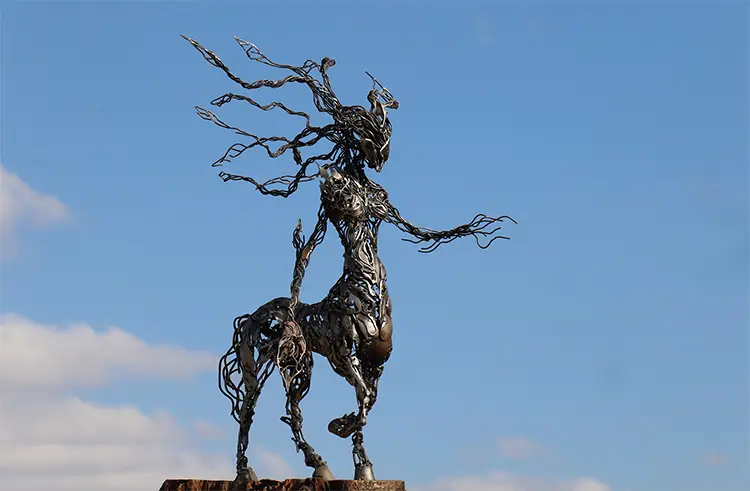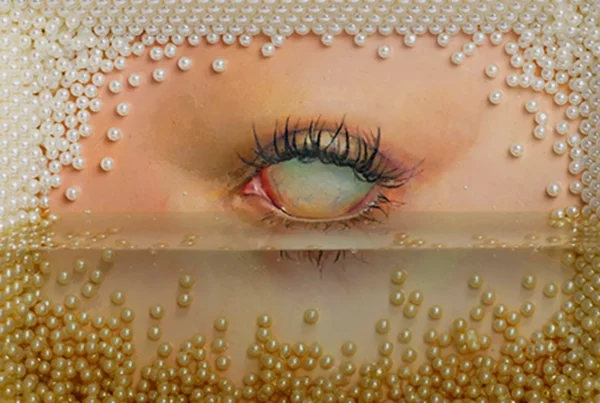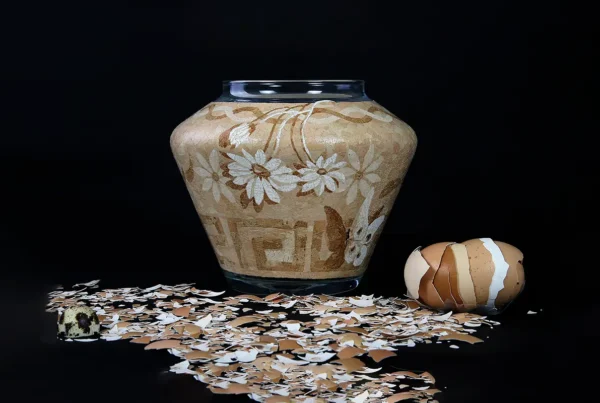“I aim to progress calmly through careful self-critique. The day I complete a sculpture feels like a beautiful result of my respect for both nature and myself.”
Industrial Echoes, Organic Currents
Cem Özkan’s artistry thrives where metal meets motion. Shaped by a foundation in classical sculpture and honed through years of personal experimentation, Özkan’s body of work explores the expressive potential of industrial waste. Educated at Ankara Anatolian Fine Arts High School and later the Sculpture Department of Anadolu University’s Faculty of Fine Arts, he laid the groundwork for a practice rooted in both form and philosophy. Emerging as a key figure in the international field of recycled sculpture, Özkan distinguishes himself by transforming discarded metal into works that appear almost to breathe. He does not merely assemble objects—he reanimates them, merging ecological awareness with technical mastery to create sculptures that embody a dual narrative of decay and vitality.
At the heart of Özkan’s method is a fascination with the dialogue between man-made waste and organic motion. By breathing new life into scrap metal and found materials, he challenges viewers to reconsider their relationship with both industrial detritus and the natural world. His sculptures often resemble anatomical studies, stripped of ornament yet rich in kinetic suggestion. This synthesis is nowhere more evident than in his monumental works Mercury (2018) and Venus. Constructed from 7,000 and 5,000 metal fragments respectively, these pieces present not only technical feats but also philosophical inquiries—how can something lifeless express the raw energy of movement? These sculptures are less representations of form and more evocations of force, underscoring Özkan’s commitment to portraying nature’s vitality through industrial relics.
Özkan’s work speaks to the broader relevance of sustainability in contemporary art. His approach extends beyond creative practice to embrace ethical responsibility, transforming refuse into vessels of meaning. This alchemical act—turning what was once discarded into something enduring—elevates scrap to sculpture and redefines the boundaries of aesthetic value. His practice is as much about vision as it is about material: the transformation of waste becomes a metaphor for renewal, memory, and resistance to overconsumption. By operating within this intersection of ethics and aesthetics, Özkan offers a powerful response to the throwaway culture of modernity, proving that beauty and insight can emerge from even the most unassuming origins.
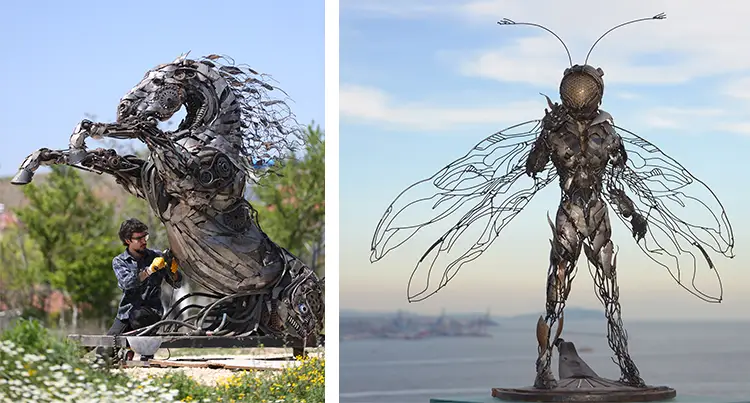
Cem Özkan: Sculpting the Language of Movement
Though grounded in classical training, Cem Özkan’s artistic output defies convention through its intense focus on dynamic form and the illusion of motion. His sculptures are not static monuments but rather frozen gestures, imbued with a vitality that challenges the expected stillness of metal. Özkan’s understanding of anatomy deeply informs his compositions. The internal structures of his works echo biological systems, revealing skeletal logic beneath the skin of iron and steel. In Mercury and Venus, there is an unmistakable sense of poised energy—an equilibrium between tension and release. These works do not simply depict motion; they seem to anticipate it, capturing the threshold where form becomes action.
Rather than camouflaging the origins of his materials, Özkan preserves their industrial character. Welding seams, jagged edges, and rusted textures are left intentionally visible, offering a stark counterpoint to the smooth, organic lines of the overall form. This aesthetic strategy invites viewers to contemplate the contrast between the rawness of the medium and the elegance of the sculpture’s gesture. His integration of scrap metal with organic elements such as bone further accentuates this duality, producing a visceral visual language that explores the conflict and connection between the mechanical and the natural. The results are works that do more than represent—they reverberate with the histories of their components, suggesting lives lived and roles discarded before their artistic reincarnation.
Influences on Özkan’s work span centuries and disciplines. From the symbolist intricacy of Hieronymus Bosch to the biomechanical surrealism of H.R. Giger, his inspirations are diverse yet consistently aligned with a fascination for complex forms and conceptual depth. His admiration for artists such as Michihiro Matsuoka and Dashi Namdakow reflects a shared interest in merging cultural symbolism with figurative intensity. Yet Özkan’s own style is uniquely his: where others may abstract, he refines; where others simplify, he constructs layered dialogues between past use and present meaning. His sculptures emerge not merely as artworks but as artifacts of transformation, embedding industrial and natural histories within their forms.
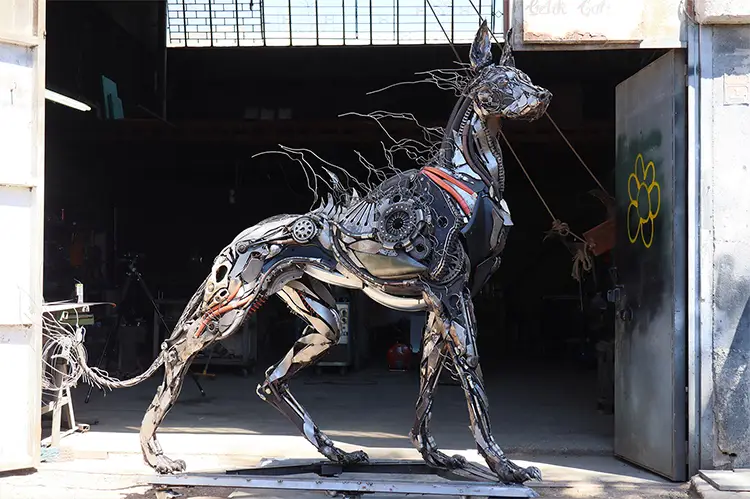
The Sculptor’s Studio: Between Discipline and Discovery
Cem Özkan’s creative process is inseparable from the physical and emotional architecture of his workspace. Located among nature’s offerings and scrapyard finds, his studio is more than a place of production—it is a carefully curated ecosystem where materials and ideas coexist. Every object is positioned to be seen, studied, and potentially reimagined. This ordered arrangement allows Özkan to maintain constant visual engagement with his components, cultivating a relationship with them before they are forged into new identities. Music plays a critical role in setting the rhythm of his labor, with tempo guiding the intensity of his focus. Time in the studio is fluid: days blend into weeks, and each sculpture becomes a sustained meditation on form, critique, and intent.
The rhythm of Özkan’s practice mirrors his respect for both craft and concept. Sculpting is not a race to completion but an evolving engagement with the material’s potential. He approaches each piece with patience, often revisiting and revising structures in a cycle of internal critique and measured progression. Completion is not merely technical but emotional—a culmination that reflects his reverence for the materials and the natural processes they metaphorically echo. For Özkan, the act of finishing a sculpture signifies more than closure; it is an affirmation of his ongoing dialogue with nature and his own creative consciousness.
Beyond the studio walls, Özkan envisions a museum that would echo his artistic philosophy: an open, evolving space immersed in nature, yet accessible from the city. This imagined exhibition would serve as a living archive of transformation, where recycled sculptures coexist with their environment in a dialogue of motion and stillness. The museum would not only showcase artworks but narrate the journey embedded in each—inviting visitors to explore the stories woven into the materials and forms. Such a space underscores Özkan’s desire to extend the narrative of his sculptures into a public, immersive experience, where art, memory, and ecological awareness converge in a shared, ever-changing landscape.
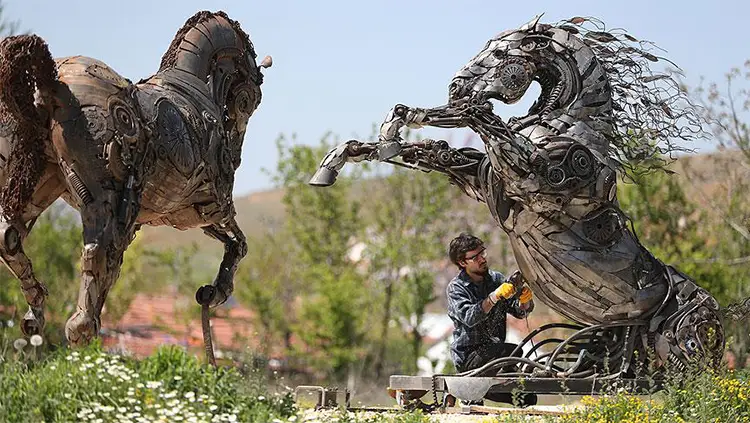
Cem Özkan: Recycling Identity Through Form
Cem Özkan’s engagement with recycled materials is not merely a nod to sustainability—it is a core narrative strategy. By using scrap metal and discarded industrial remnants, he challenges the traditional hierarchies of artistic material and reinvents sculpture as an act of reclamation. His works often reference archetypal figures—horses, astronauts, warriors—that embody strength, endurance, and motion. These symbols allow Özkan to investigate deeper themes: the tension between organic vitality and mechanical rigidity, the continuity between human ambition and environmental consequence. His figures, constructed from what society has deemed useless, return as icons of resilience, each one a statement about the latent value in what has been abandoned.
This tension is heightened by the sculptor’s treatment of surface and texture. Instead of concealing imperfections, Özkan preserves the material’s industrial past through rough surfaces, visible welds, and aged patinas. These details act as a kind of visual biography for each piece, allowing the viewer to perceive not just the shape of the sculpture but also the journey of its parts. The result is a body of work that operates on multiple levels: formally complex, emotionally resonant, and conceptually engaged. His sculptures stand not as neutral objects but as bearers of history, each component contributing to a broader meditation on time, loss, and reconstruction.
In his work, Özkan finds kinship with artists like Louise Nevelson, John Chamberlain, and Eduardo Paolozzi—figures who similarly repurposed the discarded to reflect contemporary concerns. Yet Özkan offers a distinct perspective by anchoring his compositions in the language of anatomy and nature. Where Chamberlain embraced abstraction and Paolozzi channeled machinery, Özkan returns to the body and its expressive capacities. His sculptures bridge the mechanical and the organic, the individual and the universal. Through this synthesis, he not only redefines the potential of recycled sculpture but asserts its place within the evolving narrative of contemporary art, where sustainability, identity, and transformation remain central concerns.
